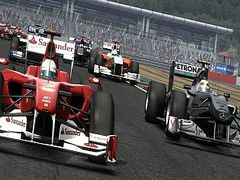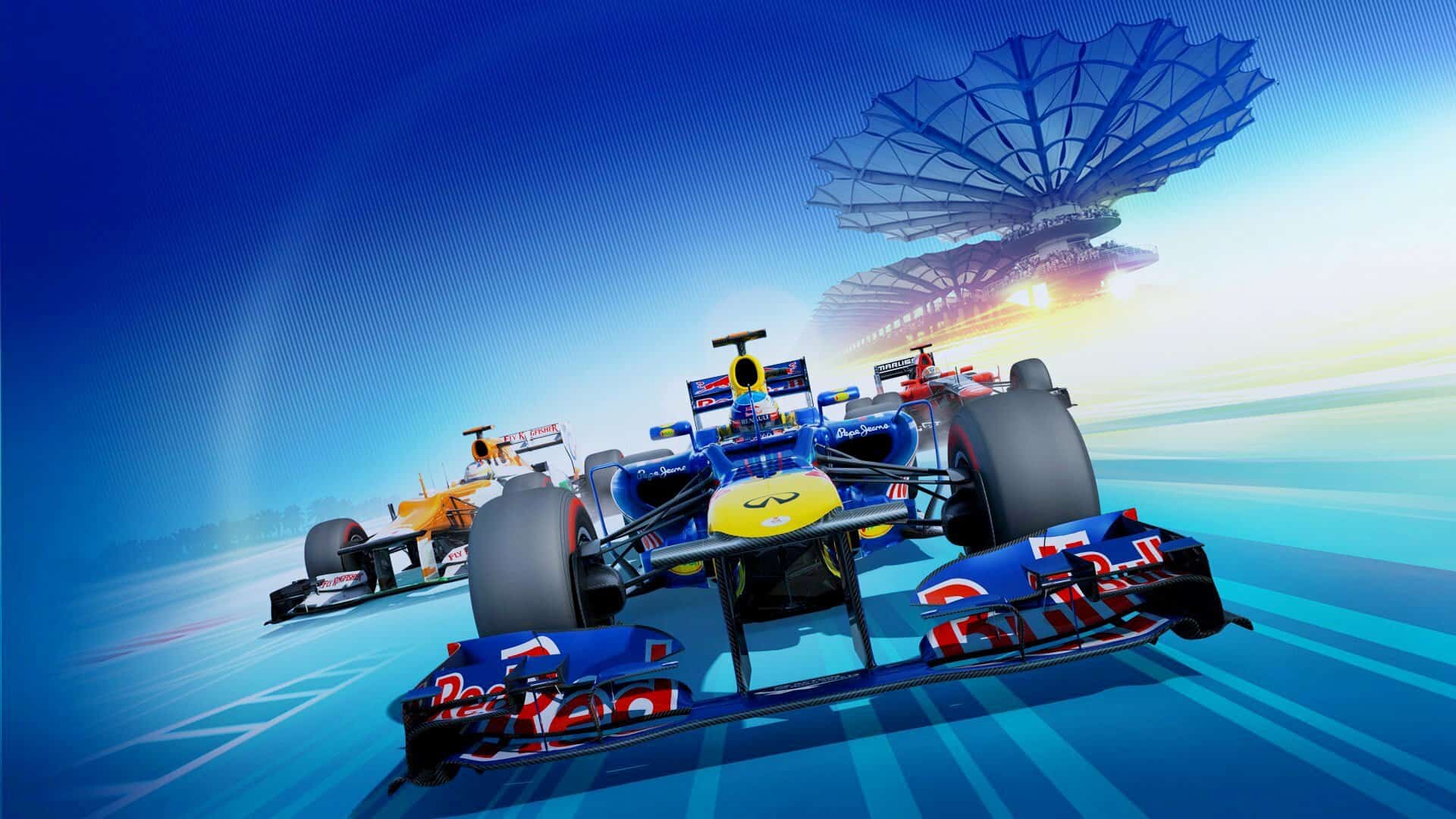You can trust VideoGamer. Our team of gaming experts spend hours testing and reviewing the latest games, to ensure you're reading the most comprehensive guide possible. Rest assured, all imagery and advice is unique and original. Check out how we test and review games here
Steve Hood is the creative director of Codemasters’ F1 series, and is currently hard at work on F1 2012. In this, the second chunk of a two-part interview, we discuss Hood’s dissatisfaction with the first two games in the series, the challenges of making an annual series, and how the F1 games are likely to change with the arrival of next-gen consoles. Click here for Part 1.
/https://oimg.videogamer.com/images/782b/f12011_e.jpg)
Q: You’ve said before now that you’re not particularly driven by sales. If that’s the case, what kind of criteria do you set for yourself to determine whether your games are successful?
Steve Hood: Personally, there are two distinct strands for me. One is, is it making money for the company so everyone can remain in their job, including myself. But the primary focus for me has always been, do I think it’s a good game? It’s nice to hear when people come up and say, “I really enjoyed playing the game, it would be great if you could put this in it as well”, and people are having a conversation about the content of your game. That’s brilliant, because I spend every waking hour thinking about this game. But what I really care about, at the end of the day, is my perception of it. If I don’t think it’s good enough and somebody else is telling me it’s brilliant, I go, “That’s really nice, but it could be better.” That’s all I care about. I think F1 10 and 11 were good, but not good enough. And I think they’re far off what we should be doing and what we will be able to achieve.
Q: Do you think this game, F1 2012, will be the one to hit that standard? I guess you may not know until you’re finished. Or do you think you’ll always be chasing that goal, never completely happy?
SH: The components are starting to come together now. I know what all the different features are, and how they’re working in their own branches, if you like. For example, things that the A.I. guys have been doing in their branch of the field, that’s brilliant – but I haven’t yet had them together in one complete package that you’d expect to get as a game. But they’re all showing promise – the weather, the feel of the physics.
There are guys who are slaving away on the car handling all the time with the physics programmer. They’ll think it’s at a really good state of play – “This is brilliant! This is as good as we can get it!”. Then I’ll sit down, do a lap with it and say, “This is s***! We’ve got to do better than that”. It must be massively frustrating for them, I’m sure, working with me. But then they’ll play around, and they might find something – “Oh, we could do this as well!” If I’m playing it and I’m saying, “That is good”… I rarely like things, so if I do like it then I think we’re heading in the right direction. And it is better this year, definitely.
Q: You’ve clearly put a lot of thought and energy into what makes a good F1 game. Is there anything that you simply can’t do at the moment, due to the limitations of current consoles?
SH: The most obvious thing that you always encounter, the ceiling is always memory. A good example is – and not that many people picked up on this – in 2010 and 2011 we built the 15-man pit crew. They reside in the garage, they can run out, put their own kit on – they’ve got their own animations and different roles in the team, which is great because it looks cool visually, even though you only make pit-stops if you’re doing the longer races. It’s only brief, anyway – they’re there for three seconds while they’re changing the tire. But we thought that would be cool. I was sick of playing racing games where you drive into the pits and there’s nobody there! Or just some static mechanic with an oily rag where you get, [makes mechanical noise] “There, we’ve changed your tyres!” That’s just rubbish!
So we wanted to the pit-stop stuff, which I think looks really cool, and you can make nice cinematic dev diaries out of that, so it’s worthwhile. But there are two pit crews, if you like, or garage crews – one of which is there when you’re in practice and qualifying. They sit in the garage the whole time, milling around or working on a car and putting it down on the jacks. But that’s not the crew that’s used during races – it switches to type 2, which is the pit crew. In practice and qualifying you can’t drive into the pit lane and have a quick tyre change from the crew outside and drive off; you always have to get wheeled back in again, because it’s a completely different crew.
You can’t have both in [the game] at one time, and that’s a memory limitation – we can stream them in an out. Immediately, with more memory, we’d be able to do that. But as developers you quickly eat that up anyway, because the pit crew would probably get more detail and more textures on them, in the same situation.
/https://oimg.videogamer.com/images/4670/f12011_k.jpg)
Q: So do you see that ever getting into a game, one day? I can imagine that a lot of people would like to see that, but at the same time all the detail elsewhere is also increasing…
SH: Exactly. I think it’s a sacrifice worth making, because for the vast majority wouldn’t know, and it doesn’t matter. If you know that you can only be wheeled back into the garage, you’re just going to have to use a few more seconds of your time to do that! It’s not a real problem.
Other things would be probably be more detailed samples for all the other cars in the race. You could use the engine samples, rather than simplifying them for the AI cars. But there’s also processing involved in that. The performance in draw distance and stuff, we could always improve that, I think. And in the future I’d want to switch us to 60 frames per second, rather than 30.
Q: We’ve talked about that before with previous games. Did you consider doing that for this time around?
SH: No, because it would be too much of a sacrifice to make on this gen – going for double the frame rate when you’ve got 24 cars and the weather system, and all the other stuff. There are so many processor-intensive things that are going on. Other developers just say, “We’ll strip all that out, and we’re going for 60, and it’s this environment only and it’s very controlled”. Whereas we go, “Well, everything’s dynamic, you drop rubber on the track, you cut through the water, and we care about all these little bits and pieces”. There are a lot of things being simulated, and also the tracks look pretty nice with all the detail put in them.
That’s always been the focus of the company, to do that, but when we do flick up to the next one, to the next engine we’re using, you almost have a choice to go 30 or 60. And I want to do 60 for the racing games.
Q: That’s at the top of your wishlist?
SH: Yeah.
Q: I guess the problem is, once you’ve made that jump you’re stuck with it. Once people are used to getting 60, if you ever want to drop back to 30, people won’t go with that.
SH: Absolutely. But I think that should be the choice for a given team. I’m not sure that anybody [at Codemasters] would say, “We’re going to run at 30 and the F1 team is going to do 60”. But at least there is a choice, whereas there hasn’t really been one in the past. And I don’t think we’d want to drop down again. For me, in the racing game, considering what we’ve learned over the time of working with Formula 1, we can now do a really good job with the resources we’ve got available. The power of the machines will ultimately dictate what we’ve go for.
Q: This series has received a very warm reception from critics and the gaming public alike. Sometimes gamers get a bit twitchy about games that enter an annual development cycle, but you don’t seem to be getting that reaction. How do you feel about working on a once-a-year series?
SH: I think generally there are a lot of sports games where, once you reach a certain level of quality, people are almost happy to accept the next title coming out, or are willing to purchase that. If people start criticising you for releasing every year, you’re not living up to the standard of expectation. If you’re delivering a sub-par game, they think, “Don’t bother releasing one this year! Leave it another year and then launch when you’re happy with it!” I think things like FIFA, certainly in recent years, has now reached that real premium quality, and they can release every year. But that’s predominantly – in my world, anyway – built around multiplayer. All my friends are talking about it: “Shall we get it on the day of release?” “Oh, ok then.” Whereas you could easily play the same game long after, with something like FIFA. For the modes I play anyway.
But Formula 1 does shift from season to season. A team will come in, they’ll be a renaming, or Kimi Räikkönen will come back to the sport. That’s a compelling reason to get the game alone, regardless of doing other feature improvements. Formula 1 will change itself again. It was going to be F1 13, but it’ll be 14 now, where the change engine regulations and turbos come back into Formula 1. That’s going to be awesome! Just to get Formula 1 cars with turbos in, it’ll be such a big sea change. If someone has 13 and they’re holding off – they’re thinking “Ah, I’ll just skip it a year” – turbos will come out, they’ll be talking about it on TV all the time, they’re thinking, “S***, my game’s really old. I better get the new one!”.
So there are in-built motivators for us, but it’s also about us giving people decent, compelling reasons to come across. That’s ultimately our job, and I don’t think that’s just about shoving 15 new features in the game every year, otherwise you quickly end up with 250 features and you can’t manage them. But there’s a still a lot of work for us to do to really, really hit that premium game, and I think we’re well on the way to doing that.
F1 2012 will be released on PC, PS3 and Xbox 360 this September.







